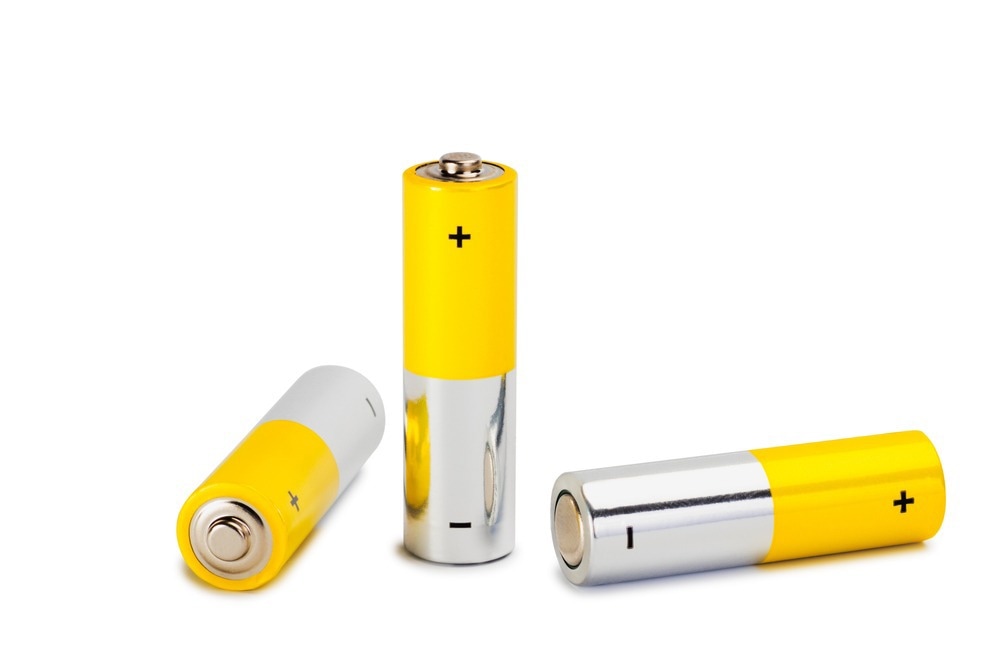AZoM speaks with Dr. Shenlong Zhao and Bin-Wei Zhang about their new research that is focused on realizing high-performance room-temperature sodium-sulfur batteries as an alternative to lithium-ion batteries.
Please could you introduce yourself and your professional background?
 Dr. Shenlong Zhao is an ARC DECRA fellow at the School of Chemical and Biomolecular Engineering, University of Sydney. His research focuses on porous carbon nanomaterials and their sustainable energy and catalysis applications, including photo/electrocatalysts and biofuel cells, and batteries.
Dr. Shenlong Zhao is an ARC DECRA fellow at the School of Chemical and Biomolecular Engineering, University of Sydney. His research focuses on porous carbon nanomaterials and their sustainable energy and catalysis applications, including photo/electrocatalysts and biofuel cells, and batteries.
 Bin-Wei Zhang is an Associate Professor at the School of Chemistry and Chemical Engineering, Chongqing University. His current research interest is renewable energy storage and conversion, including electrocatalysis, lithium/sodium‐sulfur batteries, and lithium/ sodium‐ion batteries.
Bin-Wei Zhang is an Associate Professor at the School of Chemistry and Chemical Engineering, Chongqing University. His current research interest is renewable energy storage and conversion, including electrocatalysis, lithium/sodium‐sulfur batteries, and lithium/ sodium‐ion batteries.
Why is it important to focus research attention on energy storage solutions?
Currently, the world is in an energy revolution, and it is likely to be electric. Electrical energy usually requires storage systems so that it can be utilized later.
What are the limitations that lithium-ion batteries face that inspired you to search for alternatives?
At the moment, lithium-ion batteries (LIBs) play a dominant role in battery technologies due to their safety, reliable efficiency, and relatively high energy density. However, with the widespread use of various electronic products, for example, electric vehicles, the price of lithium resources is increasing. In addition, the new emerging applications, including large-scale grids and electric vehicles, usually require battery technologies with low costs and higher energy density. Therefore, we are looking for battery systems with low costs and high energy density.
Why did you choose to explore sodium-sulfur batteries in particular?
Room-temperature sodium-sulfur batteries present one of the most promising techniques for low-cost and high-energy-density storage systems due to the abundance and high theoretical capacity both of sodium and sulfur.
What has prevented sodium-sulfur batteries from widespread use in the past?
Room temperature sodium-sulfur batteries are perplexed by several challenges, including the sluggish reactivity of sulfur and fast capacity fade. The intermediate product will dissolve into electrolyte, thus resulting in the loss of active materials, which are the main reasons for their rapid capacity fading. Moreover, to date, most of the current sulfur mass loading of these sulfur hosts unfortunately is low than 60%, which cannot satisfy the requirement of practical application.
Your battery solution can provide four times the storage capacity of lithium-ion batteries. Could you please describe the development of your technology and how such results are possible?
We developed atomic-level catalysts wreathed on graphene frameworks with the highest sulfur mass loading as the cathode for realizing high-performance room-temperature sodium-sulfur batteries. This novel cathode presents unprecedented cyclic stability with a high capacity of 505 mAh g-1, which is around four times that of commercial LiCoO2 materials for lithium-ion batteries (maintaining ~130 mAh g-1).

Image Credit: Everyonephoto Studio/Shutterstock.com
How will this new battery technology reduce production costs?
The cost of LiCoO2 cathode for lithium-ion batteries is ~$10,000/t and its energy density is 387 W h kg-1 for LiCoO2. Sulfur is abundant with ~ 0.048% in the earth’s crust (~ $150/t); in addition, the room temperature sodium sulfur batteries possess a higher energy density of 2600 W h kg-1, which will absolutely reduce production costs.
Is the manufacture of this battery scalable?
Recently, we are fabricating the pouch cells which is a key step for boosting the technology from the lab to the industrial scale. If the stage can be successful, we will contact the batteries-related companies to test and verify the performance of the pouch cells. After then, more experiments will be carried out to overcome the barriers in commercialization and marketing by collaborating with the company.

Image Credit: Matveev Aleksandr/Shutterstock.com
What implications will this new technology have for the environment compared to current commercial battery types?
These batteries can be recyclable and then re-activated. This re-activated technology is being developed at the University of Sydney and Chongqing University.
Are there any limitations to this technology that are yet to be overcome?
The gap between the industry and lab achievement is an important barrier, which requires more engineers to work on this technology to commercialize it.
Was there any part of the research and development process that shocked or surprised you?
The most technical challenge of the project is materials component optimization. Many experiments were carried out to alter the chemical components of single-layer MoS2 and single Mo atoms by optimizing the synthesis temperatures.
What are the next steps for your research?
We are planning to finish the pouch cell fabrication and test within 1-1.5 years. After then, we will spend 2-3 years working with company/industry partners to address the problems regarding commercialization and market.
More from AZoM: Calcium as a Battery Material?
About Dr. Shenlong Zhao
 Dr. Shenlong Zhao is an ARC DECRA fellow at the School of Chemical and Biomolecular Engineering, University of Sydney. He received a bachelor’s degree from Shandong University and obtained his PhD degree from the Harbin Institute of Technology and National Center for Nanoscience and Technology in 2017. Then, he moved to the University of New South Wales as a postdoc. He joined the University of Sydney in 2019 as an FH Loxton Research Fellow. His research focuses on porous carbon nanomaterials and their sustainable energy and catalysis applications, including photo/electrocatalysts and biofuel cells, and batteries.
Dr. Shenlong Zhao is an ARC DECRA fellow at the School of Chemical and Biomolecular Engineering, University of Sydney. He received a bachelor’s degree from Shandong University and obtained his PhD degree from the Harbin Institute of Technology and National Center for Nanoscience and Technology in 2017. Then, he moved to the University of New South Wales as a postdoc. He joined the University of Sydney in 2019 as an FH Loxton Research Fellow. His research focuses on porous carbon nanomaterials and their sustainable energy and catalysis applications, including photo/electrocatalysts and biofuel cells, and batteries.
https://www.sydney.edu.au/engineering/about/our-people/academic-staff/shenlong-zhao.html
About Bin-Wei Zhang
 Bin-Wei Zhang is an Associate Professor at the School of Chemistry and Chemical Engineering, Chongqing University. He received his Ph.D. degree from Institute for Superconducting and Electronic Materials (ISEM), University of Wollongong (UOW), in 2019. He was a postdoc at the University of New South Wales and UOW. His current research interest is renewable energy storage and conversion, including electrocatalysis, lithium/ sodium sulfur batteries, and lithium/sodium ion batteries.
Bin-Wei Zhang is an Associate Professor at the School of Chemistry and Chemical Engineering, Chongqing University. He received his Ph.D. degree from Institute for Superconducting and Electronic Materials (ISEM), University of Wollongong (UOW), in 2019. He was a postdoc at the University of New South Wales and UOW. His current research interest is renewable energy storage and conversion, including electrocatalysis, lithium/ sodium sulfur batteries, and lithium/sodium ion batteries.
https://xs.zidianzhan.net/citations?user=XViOsh4AAAAJ&hl=zh-CN&oi=ao
Disclaimer: The views expressed here are those of the interviewee and do not necessarily represent the views of AZoM.com Limited (T/A) AZoNetwork, the owner and operator of this website. This disclaimer forms part of the Terms and Conditions of use of this website.